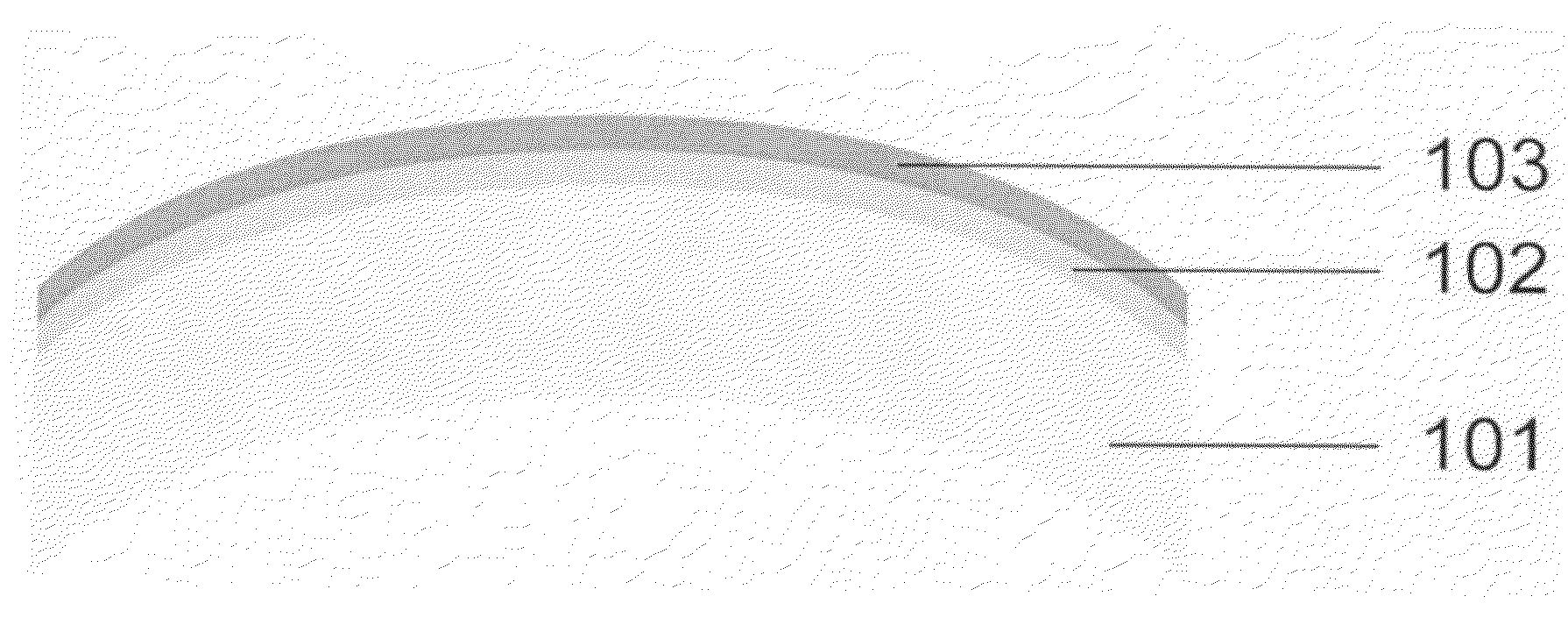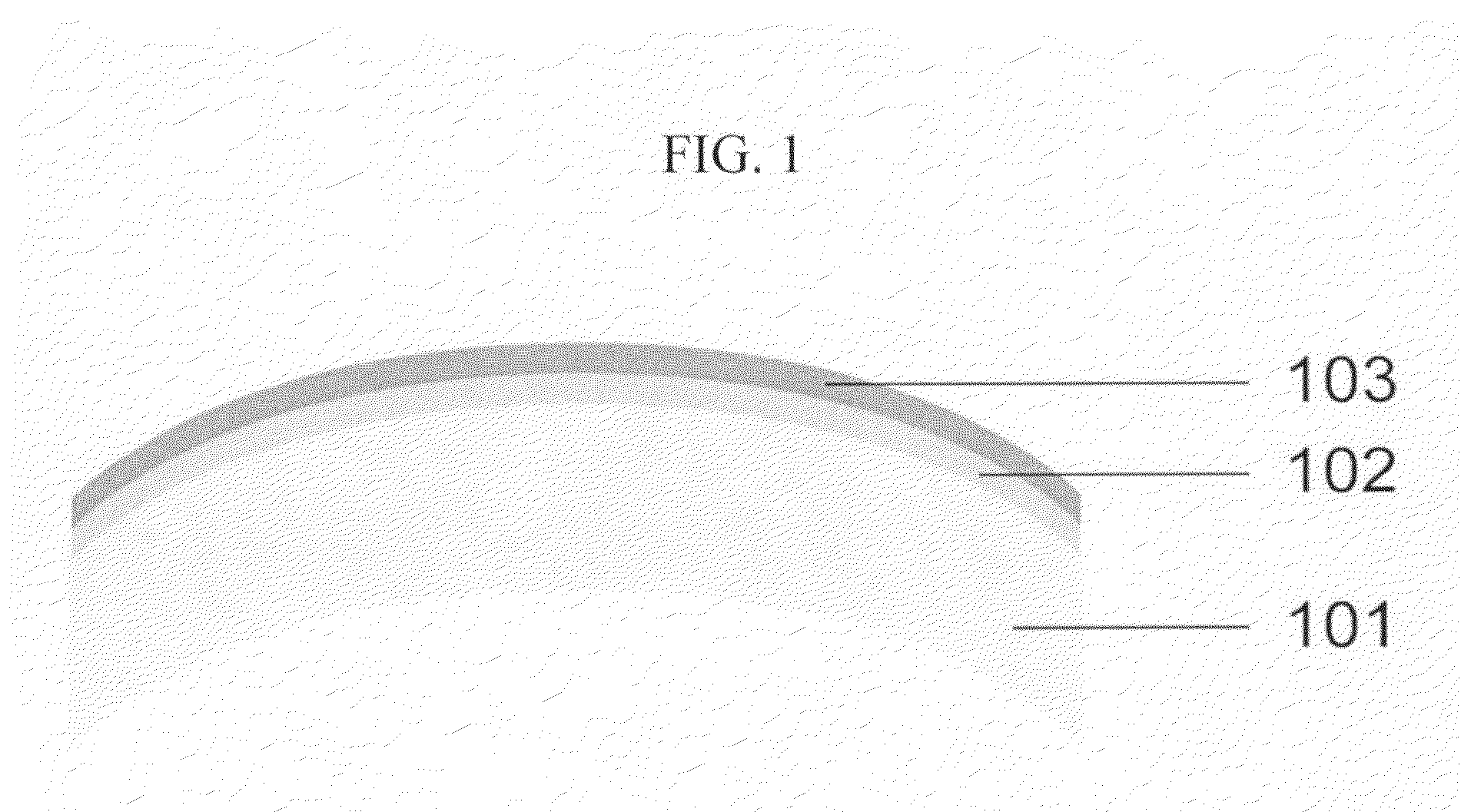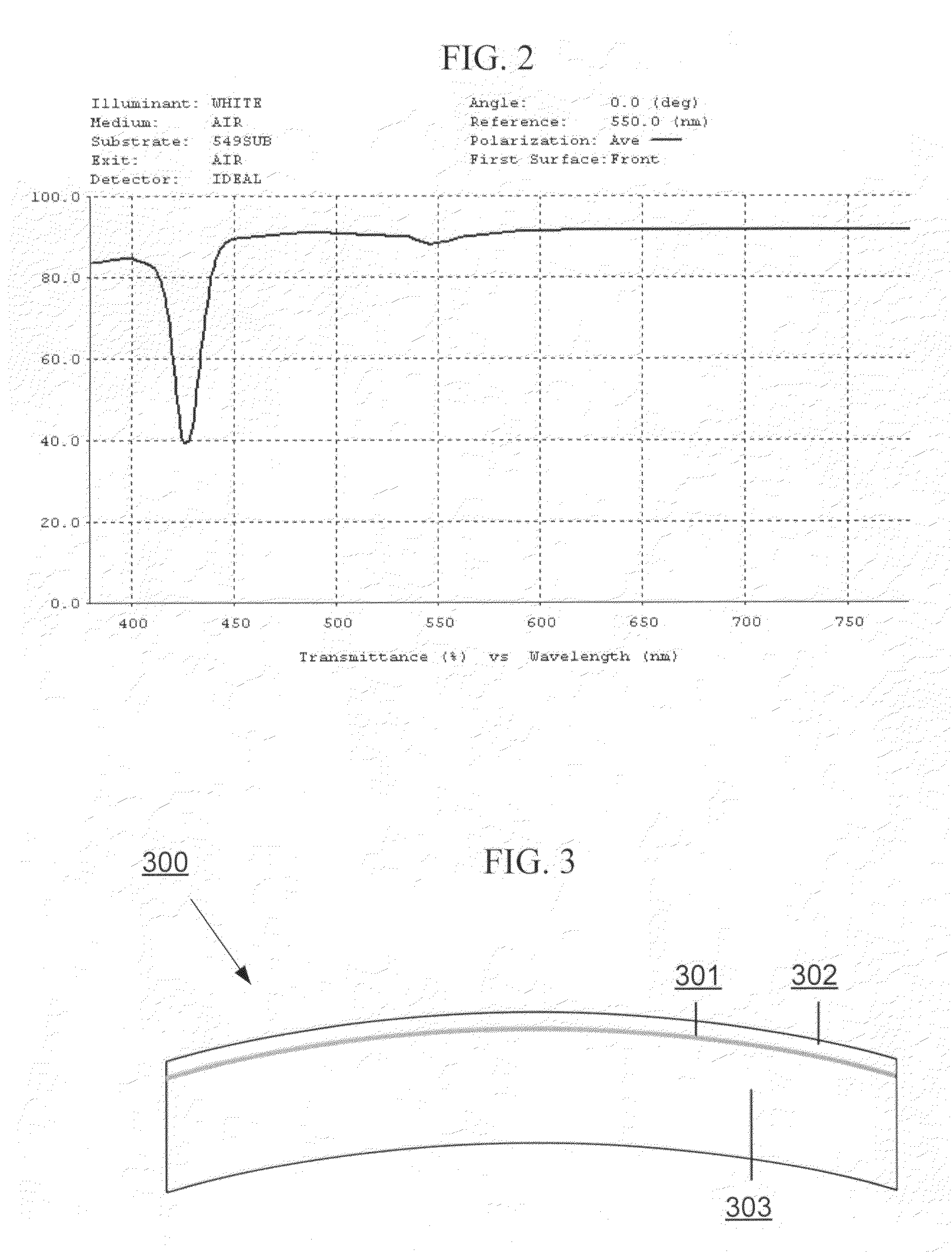System and method for selective light inhibition
a light inhibition and selective technology, applied in the field of selective light inhibition, can solve the problems of reducing the light affecting the ophthalmic application of many patients, so as to reduce the flux of blue light, reduce or minimize the dilation of the pupil, and reduce the luminous transmission
- Summary
- Abstract
- Description
- Claims
- Application Information
AI Technical Summary
Benefits of technology
Problems solved by technology
Method used
Image
Examples
Embodiment Construction
[0042]According to the invention, a film in an ophthalmic or other system may selectively inhibit at least 5%, at least 10%, at least 20%, at least 30%, at least 40%, and / or at least 50% of blue light within the 400 nm-460 nm range. As used herein, a film “selectively inhibits” a wavelength range if it inhibits at least some transmission within the range, while having little or no effect on transmission of visible wavelengths outside the range. The film and / or a system incorporating the film may be color balanced to allow for being perception by an observer and / or user as colorless. Systems incorporating a film according to the present invention may have a scotopic luminous transmission of 85% or better of visible light, and further allow someone looking through the film or system to have mostly normal color vision.
[0043]FIG. 1 shows an exemplary embodiment of the present invention. A film 102 may be disposed between two layers or regions of one or more base materials 101, 103. As f...
PUM
| Property | Measurement | Unit |
|---|---|---|
| wavelengths | aaaaa | aaaaa |
| wavelengths | aaaaa | aaaaa |
| wavelengths | aaaaa | aaaaa |
Abstract
Description
Claims
Application Information
 Login to View More
Login to View More - R&D
- Intellectual Property
- Life Sciences
- Materials
- Tech Scout
- Unparalleled Data Quality
- Higher Quality Content
- 60% Fewer Hallucinations
Browse by: Latest US Patents, China's latest patents, Technical Efficacy Thesaurus, Application Domain, Technology Topic, Popular Technical Reports.
© 2025 PatSnap. All rights reserved.Legal|Privacy policy|Modern Slavery Act Transparency Statement|Sitemap|About US| Contact US: help@patsnap.com



